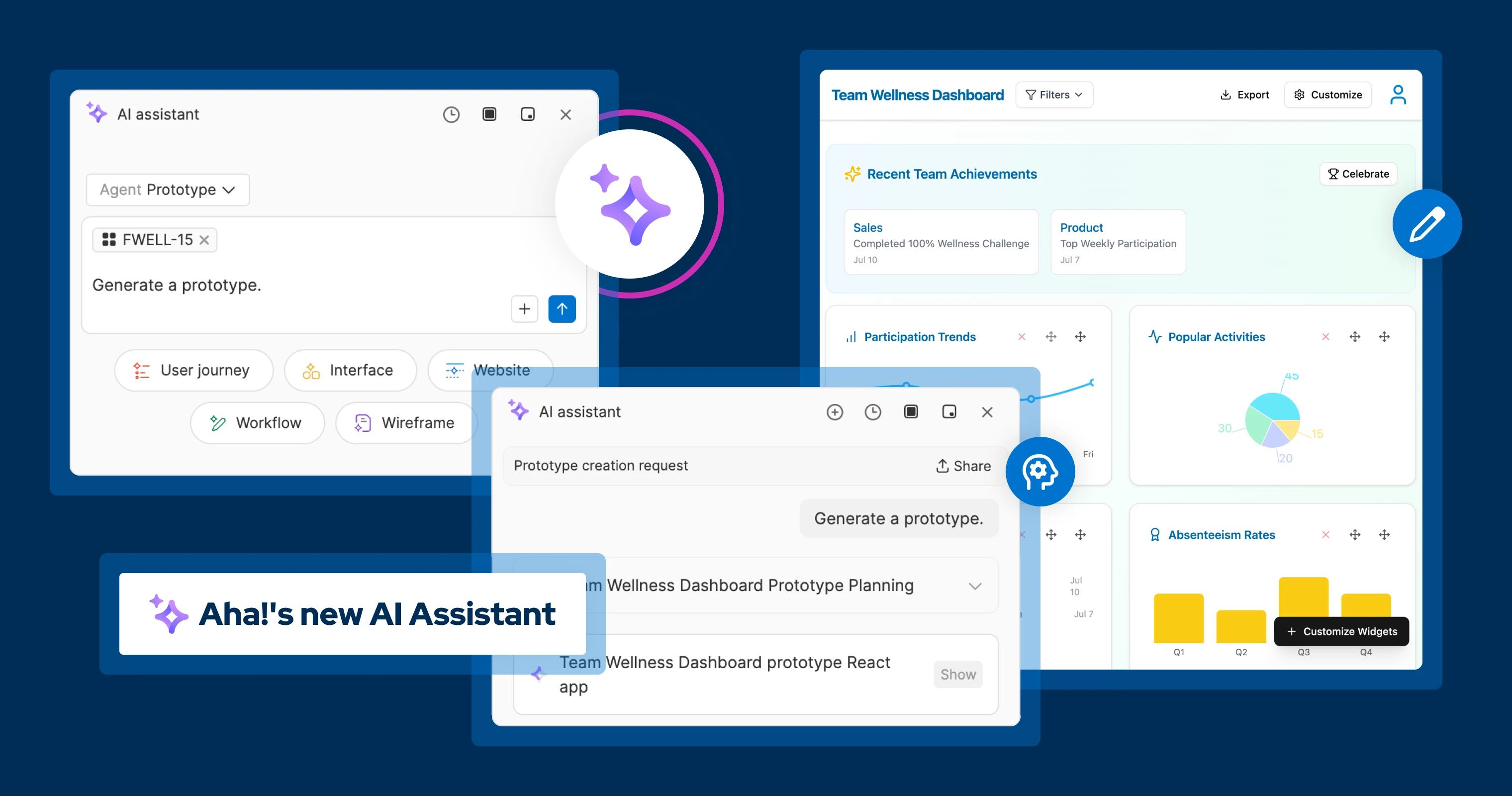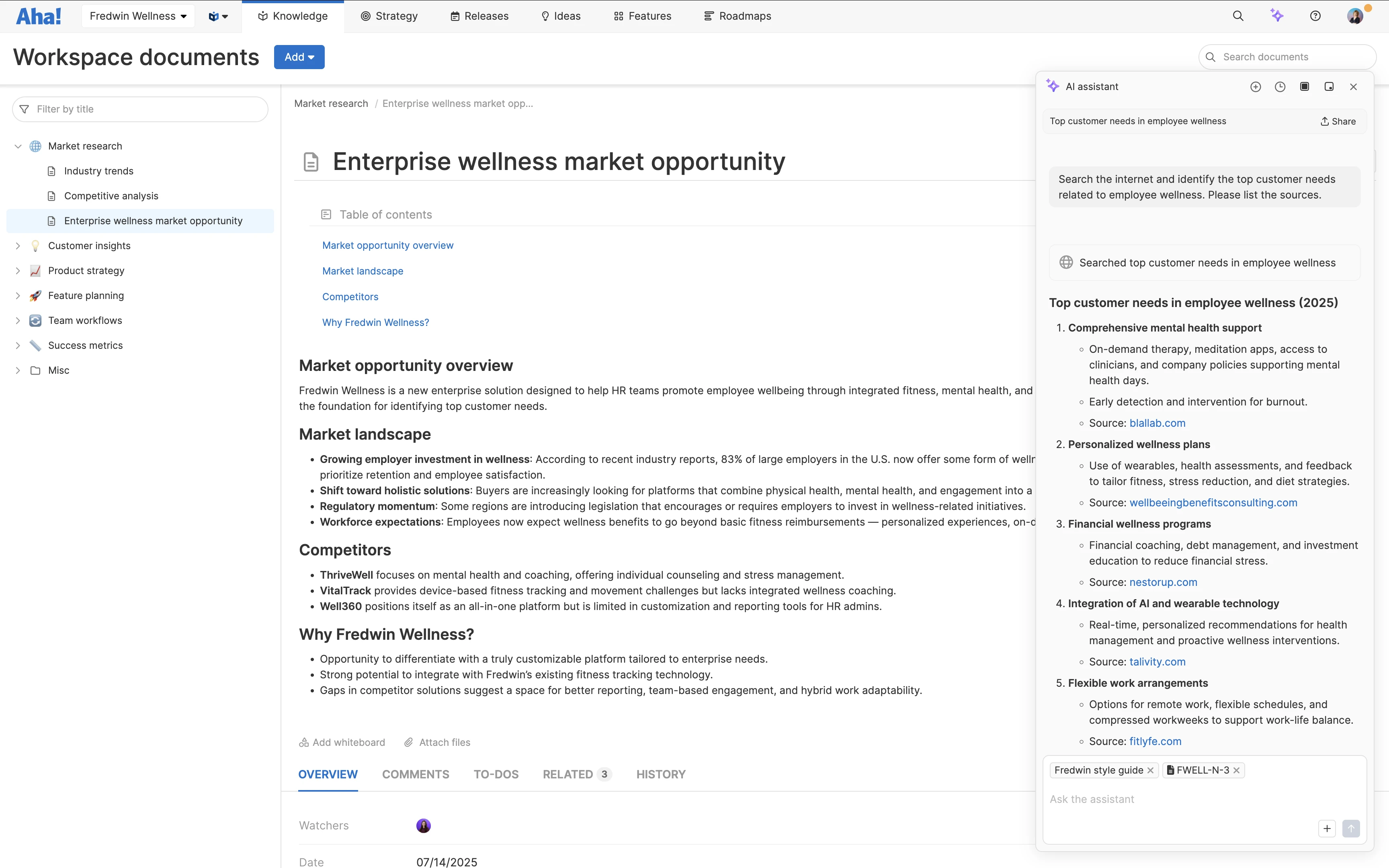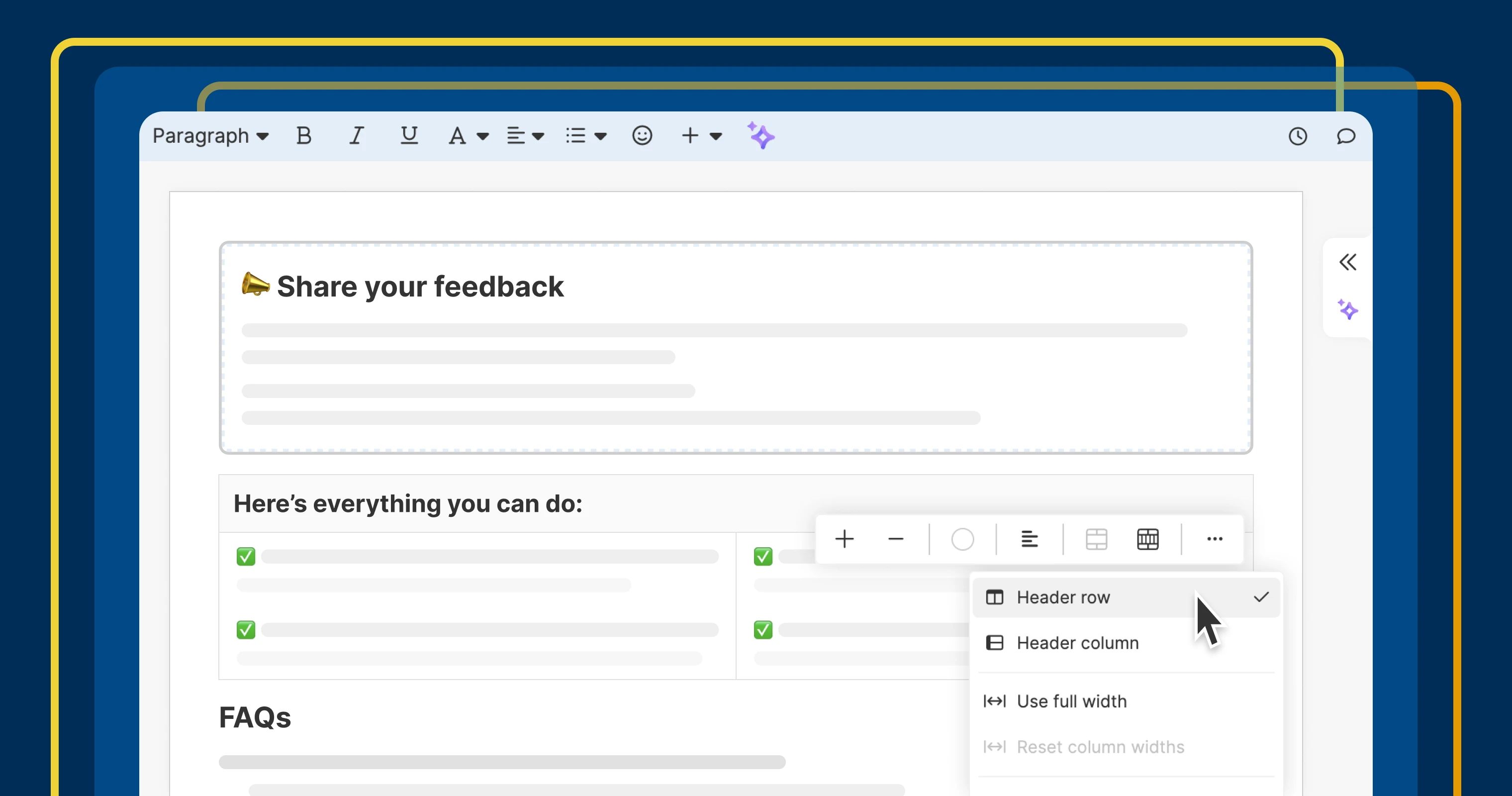
Meet the new AI assistant — it is embedded across your workflow, from planning to delivery.
The new Aha! AI assistant will change how you build products
Editor's note: AI usage in Aha! software runs on a credit-based model as of Oct. 22, 2025. All paid plans now include AI credits, with the option to purchase additional credits as needed.
High-speed broadband. The internet. Mobile. SaaS. And now, AI.
AI has the promise to create the most value out of all those transformative technologies. We just released a completely immersive AI assistant in Aha! software. And in a few months, it has transformed how we build products (while we were using it internally). You now have access to it as well. You cannot miss it: It has been added to the top nav. We had to make room for it because it changes everything.
The new AI assistant is purpose-built for product development teams. It will change how you work and build products.
Yes, it benefits Aha! if you use the AI assistant. But forget about us. It will change you. If you use it, there is no way it will not. It is the only technology we have ever encountered where its power is only limited by our imagination, and it does the majority of what you want it to do better than you could ever imagine.
We were among the first to bring AI into product development software. You have already used AI across the Aha! suite to draft content, analyze feedback, and search across your account. But that was nothing compared to what we released today. The updated AI assistant is completely new — and it will help you with everything from product discovery to delivery.
You will see a sparkle icon in the newly streamlined top navigation and the updated text editor toolbar (also released today). Open it to launch the AI assistant in a side panel and have constant access as you work. Use it to:
Create text, records, reports, and prototypes
Modify, link, and analyze existing records
View and share a full history of your AI chats
The assistant draws on advanced models from OpenAI, Anthropic, and Google, automatically selecting the best one for each task. You can tailor output with custom instructions or build your own agents for workflows unique to your team. Together with the next-generation text editor, this means you can weave AI into how you build — grounding decisions in data and knowing you accounted for what matters.
This functionality is now available for all paid Aha! users at no extra cost during an early access period. We plan to introduce a usage-based approach with credits once we better understand how teams use AI in Aha! software. We will never use customer data to train the models, and built-in safeguards protect sensitive information.
Let's look at a few examples of how the AI assistant can support product development for Fredwin Wellness, a fictitious enterprise wellness product:
Accelerate market research
Dig into market opportunities without leaving your workspace. In this example, we compile insights on the enterprise wellness market. We open the AI assistant right from a note and ask it to identify top customer needs. It analyzes the document for context, searches the internet, and returns a set of well-supported insights — expanding our understanding in moments.

Highlight anything in the text editor to prompt the AI assistant to rewrite, expand, or replace it.
Turn insights into initiatives
With a clearer view of the market, we are ready to shape our strategic plan. Next, we prompt the AI assistant to propose initiatives based on our research. We review the list directly in the chat, refining each one before approving the suggestions. The initiatives instantly populate in our workspace, and we can link to our original research — keeping strategy connected and traceable.
Any initiatives created from a document automatically link back to it. This means you can easily reference relevant research from an initiative's Related tab.
Prioritize high-impact ideas
Now, let's find feedback that ties directly to one of our strategic initiatives — so we can prioritize the work that best meets customer needs. In this example, we open the AI assistant from the Ideas overview page and prompt it to find related ideas. The assistant returns a list of potential matches and generates a report for easy review.
You can also use AI-powered exploration (available in Aha! Ideas Advanced) to analyze all customer feedback at once and uncover emerging needs.
Accelerate feature definition
Plan stronger releases faster with help from the AI assistant. We already used it here to create the feature description. Now, let's define acceptance criteria. We set up custom instructions so the assistant automatically follows our team's formatting standards. It reviews related requirements for context and returns a complete, structured output — ready to add directly to the feature.
Custom instructions and agents set at the workspace level help maintain consistency and simplify complex work.
Generate a prototype
Our features are defined, so it is time to bring the experience to life. In this example, we ask the AI assistant to create a working prototype. It reads the feature details and generates underlying code. Preview shows a live view, making it possible for the team to visualize functionality, gather feedback, and align on the right approach.
Edit the source code directly or prompt the AI assistant to adjust it — refining the prototype until it is just right.
Assess release progress
Get a snapshot of progress across a release. From a list report of features, we prompt the AI assistant to summarize what is happening. It reviews data — such as statuses, estimates, and dependencies — and returns a clear overview with progress, risks, and suggested next steps. Now, we know exactly where to focus to keep work moving on schedule.
Use the AI assistant to create a list report with any data in your account. It turns raw information into organized, actionable views.
This is a chance to rethink how you approach your work — with help from AI built specifically for product teams.
Within a year, none of us will imagine building products without aid from AI. Our AI assistant is designed for this next era — helping you explore ideas, set priorities, and make thoughtful choices that lead to better outcomes. Try it and see how it changes the way you work.
Start a free trial
The AI assistant is available to all Aha! customers. Our suite of tools includes Aha! Roadmaps, Aha! Ideas, Aha! Discovery, Aha! Whiteboards, Aha! Knowledge, Aha! Teamwork, and Aha! Develop. Use each product individually or combined to help teams deliver even greater value. Sign up for a free 30-day trial or join a live demo to see why more than 1 million product builders trust our software to build lovable products and be happy doing it.




